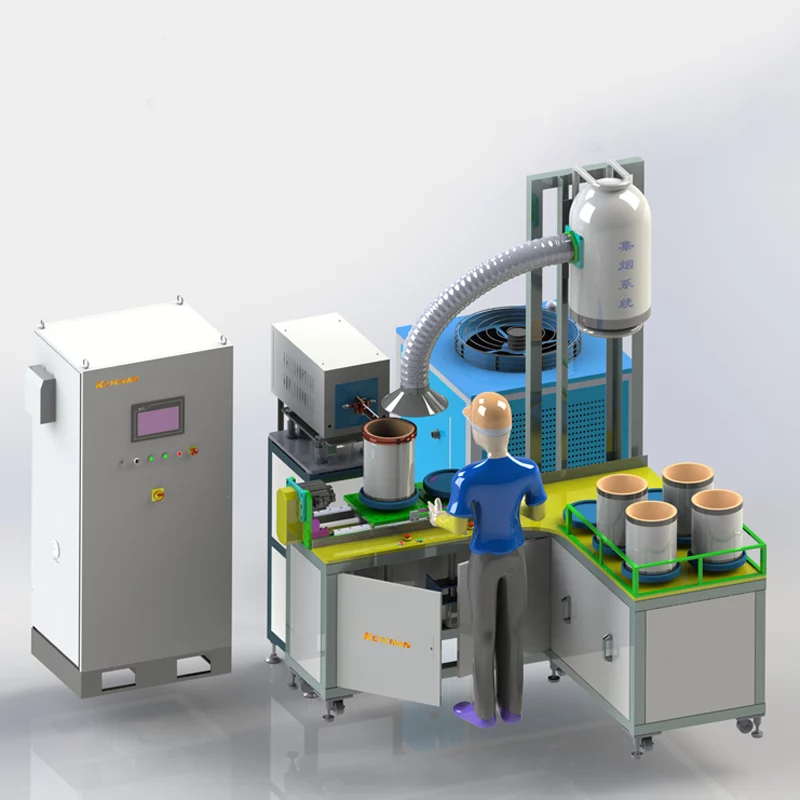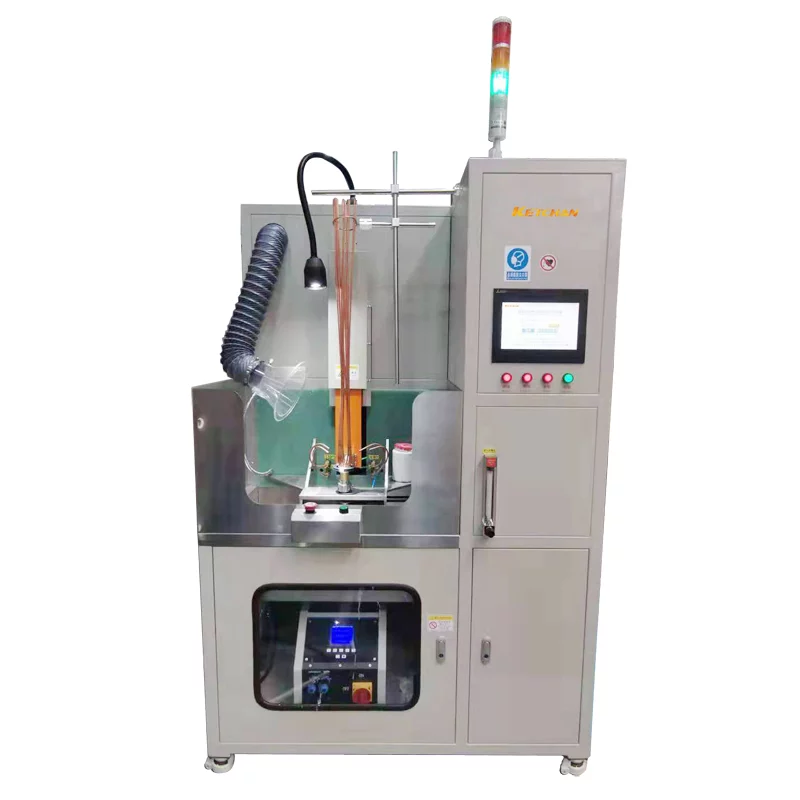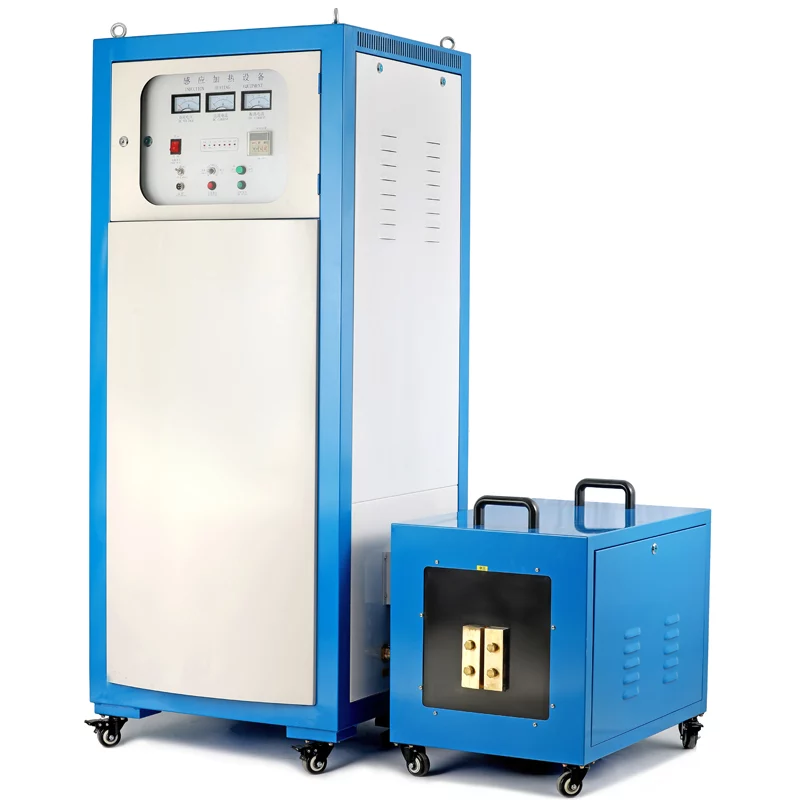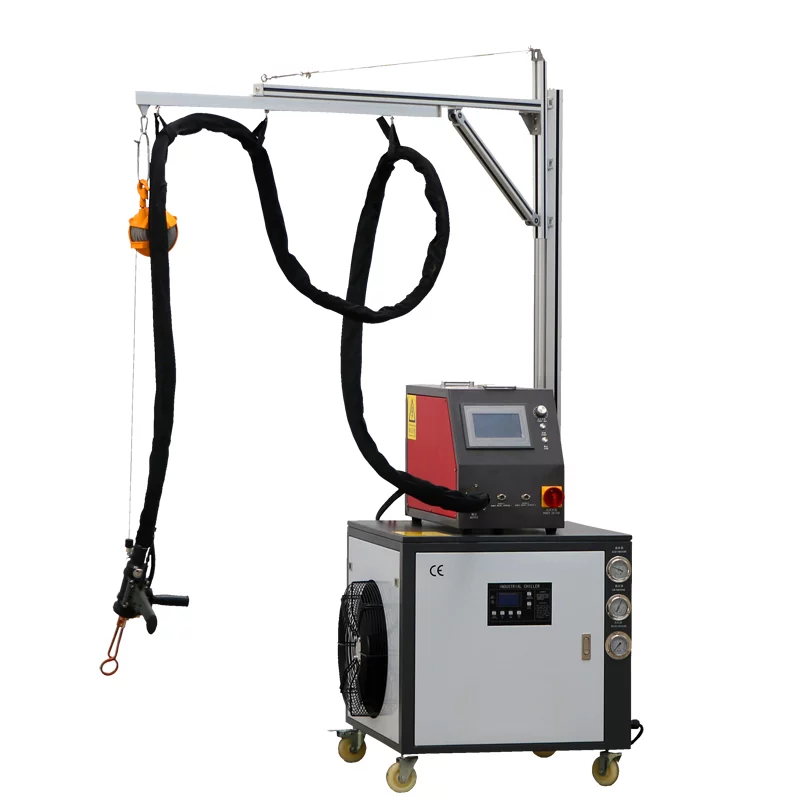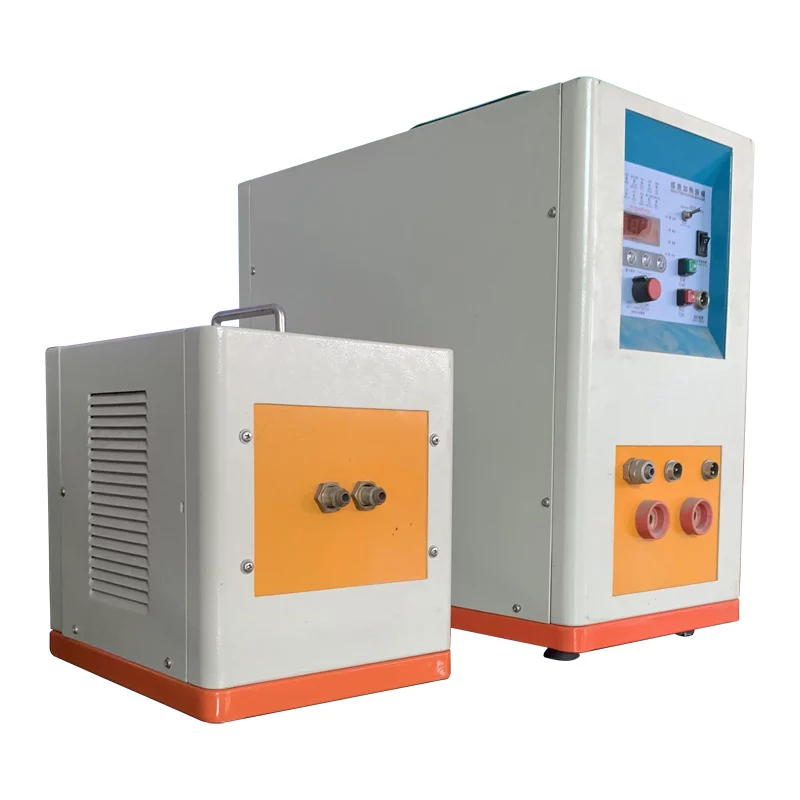Abstract:
In this paper, a method of high-frequency induction brazing of aluminum radiators is proposed for the single-tube pressure plate in automobile air-conditioning parts. A technical process and an operation method are proposed for it, the existing production process is improved, and the problem that the aluminum radiator is difficult to be induction brazed is solved.

Benefits of high frequency induction brazing:
High-frequency induction brazing: The welding seam is heated to the melting temperature of the alloy brazing material by induction heating, but the metal to be welded still does not reach the melting temperature at this time, and the low melting point alloy adheres to the two metals together through strong surface tension, a solid weld is formed after cooling. Parts of the same or different materials can be welded together, and the material-saving effect is remarkable, which can meet various needs. It is suitable for induction welding of various magnetic materials such as steel, copper, aluminum, nickel, special alloys, etc. High-frequency local welding has high strength, no deformation, and comprehensive mechanical properties that are better than another welding.
Induction brazing is one of many brazing methods. It does not heat the metal by thermal radiation but uses the principle of electromagnetic induction to make the metal itself generate heat. This heating method has high energy utilization and rapid heating, only uses electric energy, and has the characteristics of low energy consumption, low pollution, and low harm.
Material welding performance analysis:
Aluminum alloys are more difficult to braze than other alloys, mainly because of:
- Because it is easy to form a very dense oxide film on the surface. The properties of this oxide film are very stable, and covering the surface of the workpiece will hinder the wetting of the solder on the surface of the workpiece, thereby affecting the quality of brazing. The melting point of the oxide film on the surface of the aluminum alloy is very high, and at the brazing temperature of 270 °C, the thickness of the oxide film increases sharply than that at room temperature, which seriously hinders the wetting and bonding of the solder and the base metal. This is also the main reason why aluminum alloy is difficult to repair after brazing once;
- When soldering aluminum alloys, on the surface of the base metal with oxides, the liquid brazing filler metal tends to condense into a spherical shape, which does not wet with the base metal, nor does it cause caulking.
Complete radiator induction brazing system structure:
The system consists of seven parts: Industrial chiller, induction heating power supply, transformer, output unit, positioning tooling, accessories, and post-weld cleaning.
Technical process:
Induction brazing machine power source selection – induction coil selection – solder flux selection – tooling positioning design – accessory selection – welding parameter determination – cleaning after welding.
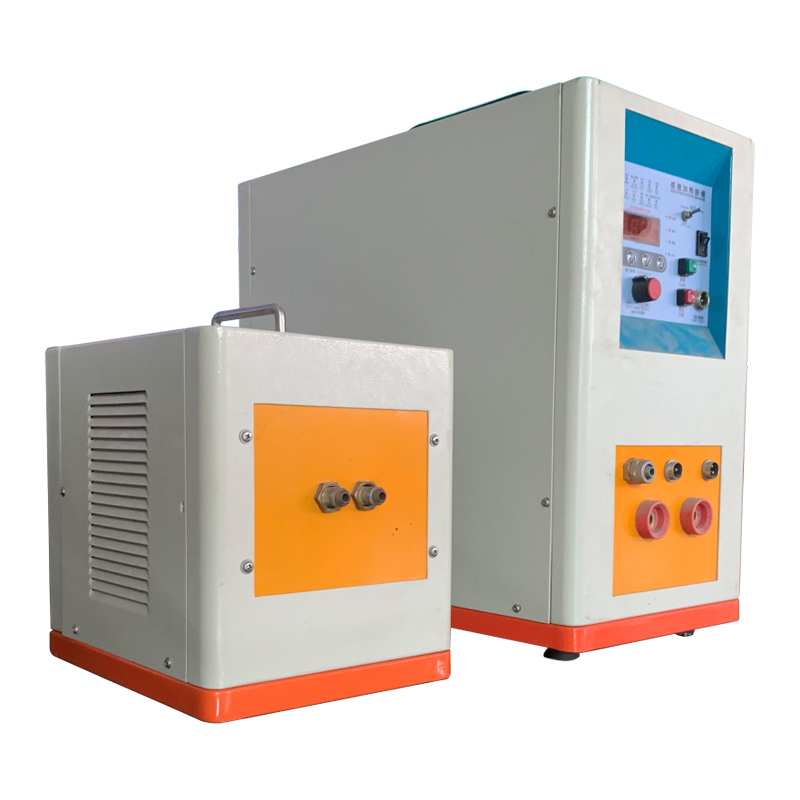
Machine Model choice:
The radiator(heat sink) is an aluminum component composed of thin sheets, and the size difference between the radiator and the base plate is small, but the wall thickness of the single-piece radiator and the base plate is quite different. Under the condition of absorbing the same amount of energy, the base plate generates less heat than the radiator. When designing the induction brazing tool, consider the uniform heating of the base plate and the heat sink, ie the brazing temperature is reached at the same time. At the same time, it is necessary to consider the production efficiency of the workpiece in the production process, and the way of putting in and taking out. Combining these two factors, a flat disc four-circle induction brazing tool is designed.
Solder flux selection:
- The melting point of the solder must be lower than that of the base metal;
- After the solder is melted, it can well wet and flow on the surface of the base metal;
- It can be combined with the base metal to form a firm joint;
- The composition is stable, non-toxic, and harmless.
Positioning tooling:
Due to the uneven distribution of the magnetic field of the disc induction brazing tool, according to the heating state (whether there is an area heating up too fast), it is necessary to fine-tune to determine the final workpiece position;
The workpiece to be welded needs to be tightened. Otherwise, when the induction brazing equipment is working, the position of the workpiece will change due to the action of electromagnetic force (Lorentz force).
Accessory selection:
The induction heating power supply needs to be cooled during the high-frequency induction braze welding period, and an industrial chiller of corresponding specifications is required. When the customer uses the infrared mode and conducts real-time temperature monitoring, a digital infrared thermometer needs to be installed. In our company’s infrared temperature measurement, when the instrument and power supply work together, the temperature control accuracy can reach up to ±1℃. Our company can provide customized infrared thermometers for chillers and high-frequency induction brazing.
Brazing parameters confirmation:
After our long-term high-frequency brazing research and a lot of customer experience, we choose the automatic heating mode in this model. The heating current in the automatic heating mode is divided into five sections. During this process, the characteristics of aluminum metal are increased with the temperature. When the resistance is high and the resistance increases, the Joule effect causes the heating rate to increase in the heating process, which is inconsistent with the welding process we have concluded from our research. Therefore, we use a step-by-step current decreasing method to heat the welding part. In this way, the temperature of the welding part can be increased under the premise of ensuring uniform heating, so as to prevent the workpiece from overburning in the high-temperature section. Finally, in order to ensure the integrity of the welding process, we set a small current for heat preservation to ensure that it reaches the penetration depth standard and has no pores and blisters. and other process standards.
Operation steps:
Surface preparation: remove the oxide film and oil stains on the surface of the workpiece
Positioning of the workpiece: The workpiece is positioned, supported, and fixed to ensure that the relative position of the workpiece and the inductor remains unchanged during mass production, and the brazing material is made into a ring and added to the part to be welded.
Heating process: using the previously set parameters, the operator only needs to press the start button, and the equipment will automatically execute the previously set parameters to accurately weld the workpiece, and stop heating after the welding is completed.
Post-brazing treatment: directly put the workpiece in water or clean with other chemicals
Summarize:
In this paper, through the description of 5 aspects of high-frequency induction brazing technology of aluminum radiator, material welding performance analysis, process flow, operation method, power consumption calculation and welding material consumption, a new method is proposed to solve the problem that aluminum metal is difficult to be induction brazed. A solution based on all-digital induction heating technology, covering all aspects of pre-welding, welding, and post-welding. And give detailed and effective data to prove the advantages of high frequency induction brazing in radiator high frequency induction brazing process.
Tags:aluminum brazing, Aluminum Induction Brazing, brazing aluminum heat sink, brazing aluminum radiator, handheld induction brazing, high frequency induction brazing, high frequency induction heater, high frequency welding machine, iduction aluminum brazing, induction brazing, induction brazing aluminum, induction brazing equipment, induction brazing hvac, induction brazing machine, induction brazing machine price, Induction Brazing of Aluminum Radiators, induction brazing process, induction brazing solutions, induction brazing system, induction heating radiator, poratble induction silver brazing, portable induction brazing, Radiator
Relate Products
-
Induction Brazing System
Aluminum Pipe Induction brazing machine
-
Induction Brazing System
Automated Induction Brazing System
-
HF Induction Heating System
High Frequency Induction Brazing Machine
-
UHF Induction Heating System
Ultra High Frequency Welding Machine
-
Portable Induction Heaters
Portable Induction Brazing Machine
-
Induction Brazing System
Aluminum Induction Brazing

